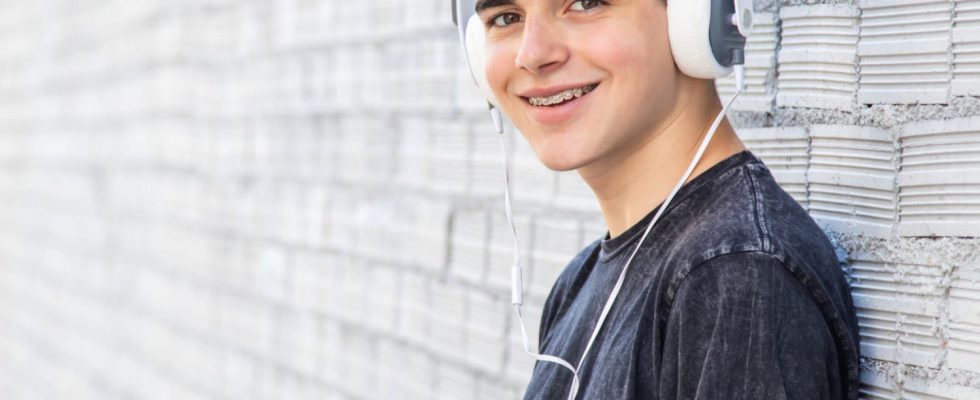No need to invest in an expensive latest generation phone to enjoy lossless audio on a mobile: Android and iOS have been managing high quality uncompressed sound for years! You just need to use a compatible app.
Google’s announcement must have made some audiophiles smile. In a message published on lossless via USB, providing incomparable sound quality to music lovers. It was enough to amaze some uninformed observers who were delighted with the arrival of high quality sound on the new Google smartphones, thus suggesting that only these latest generation models could benefit from it. What is wrong ! Because for a long time now, everyone has been able to listen to lossless audio on mobile, without the need for a modern device, and, above all, for free!
MP3 and AAC: the reign of destructive compressed audio
For an entire generation – mainly people born from the 1990s onwards – music only exists in compressed form. More precisely, digital audio only exists in compressed form. This is the price for the success of formats such as MP3 or AAC, standards which popularized the distribution of music in digital form on the Internet as well as on portable music players, and which are now available for streaming and podcasts. . All these formats (MP3, AAC, OGG, and even Dolby AC’3 used in video) have one thing in common: they are destructive. Indeed, during encoding information is removed from the original signal in order to reduce the amount of data to be transmitted or stored. And this is also the case with Bluetooth used for wireless speakers and headphones, which again converts audio into another destructive compressed format, once again altering sound quality.
And it is precisely this destruction that allows for more compact files. As it should be, this deletion of information is not done at random. It is carried out using specific algorithms – rules – based on psychoacoustics to remove information deemed useless or inaudible to the human ear. And it works very well: as long as the process is not too corrosive, it is difficult to distinguish a compressed copy from the original – especially when you have never heard it! And most people are just fine with the quality of compressed audio when listening to music via streaming platforms.
FLAC: the preferred format for audiophiles
In fact, only slightly trained ears prefer to hear music in its original quality, as it was recorded in the studio to make a master and then audio CDs or vinyl records. And there are specific formats for this, such as WAV or AIFF, which retain all the signal information. The problem is that files of this type are “heavy”: without getting into too technical considerations, a 5-minute stereo recording in WAV takes up around 50 MB when its equivalent compressed in MP3 (128 bit/quality). s) is limited to 5 MB. Fortunately, there are also so-called lossless or non-destructive compressed audio formats which make it possible to reduce the volume of data without deleting information and therefore without reducing sound quality: these are the famous formats . The best known is the FLAC – its real name, the Free Lossless Audio Codec –, very popular with audiophile enthusiasts and used by some music platforms, which allows you to enjoy the highest quality, without taking up too much space, thanks to a compression rate of 30 to 70% compared to the original in WAV . This is clearly the format to favor when you want the best sound quality, especially since it is compatible with very high audio resolutions such as 24 bits – 96 kHz.
AIMP and VLC: free quality for all
The good news is that you don’t need much to enjoy it: just good headphones or good speakers. Because FLAC, which has existed since the early 2000s, has been perfectly managed by operating systems for a long time, on computers and mobile phones. Android has recognized it since version 3.1, released in 2011, and iOS since the version, published in 2017. And there are many reading apps that manage this format as well as traditional MP3: AIMP, Pulsar, Pi Player, foobar 2000, Stellio or even the essential VLC Player. Above all, all these players are free and They work on any smartphone!
Obviously, to really benefit from the quality of FLAC – and the lossless in general – it is essential to use wired speakers or headphones, the protocols implemented in transmissions without them being destructive. Especially since quality “old-fashioned” wired headsets are much cheaper than headphones true wireless fashionable, not always very faithful… This is also the case for the new Pixel 8 and, more generally, on phones that will run Android 14. Because the new feature announced by Dave Burke clearly states that FLAC is now managed via USB – this is the only real interest in this announcement. But this presents no advantage in practice because it is better to use the digital-analog converters of the smartphone, especially if it is a mid- or high-end model, rather than their counterparts integrated into headphones. In short, with good analog headphones plugged into the analog output and a playback app, anyone can already enjoy the quality lossless on a phone or tablet…

